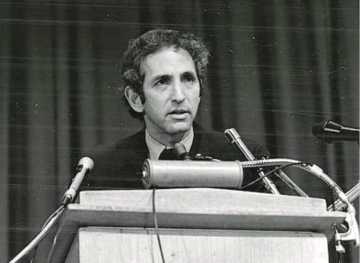 Seymour Hersh in Jacobin:
Seymour Hersh in Jacobin:
I think it best that I begin with the end. On March 1, I and dozens of Dan’s friends and fellow activists received a two-page notice that he had been diagnosed with incurable pancreatic cancer and was refusing chemotherapy because the prognosis, even with chemo, was dire. He will be ninety-two in April.
Last November, over a Thanksgiving holiday spent with family in Berkeley, I drove a few miles to visit Dan at the home in neighboring Kensington he has shared for decades with his wife Patricia. My intent was to yack with him for a few hours about our mutual obsession, Vietnam. More than fifty years later, he was still pondering the war as a whole, and I was still trying to understand the My Lai massacre. I arrived at 10 a.m. and we spoke without a break — no water, no coffee, no cookies — until my wife came to fetch me, and to say hello and visit with Dan and Patricia. She left, and I stayed a few more minutes with Dan, who wanted to show me his library of documents that could have gotten him a long prison term. Sometime around 6 p.m. — it was getting dark — Dan walked me to my car, and we continued to chat about the war and what he knew — oh, the things he knew — until I said I had to go and started the car. He then said, as he always did, “You know I love you, Sy.”
So this is a story about a tutelage that began in the summer of 1972, when Dan and I first connected. I have no memory of who called whom, but I was then at the New York Times and Dan had some inside information on White House horrors he wanted me to chase down — stuff that had not been in the Pentagon Papers.
More here.
 Scientists have generated the first complete map of the brain of a small insect, including all of its neurons and connecting synapses.
Scientists have generated the first complete map of the brain of a small insect, including all of its neurons and connecting synapses.
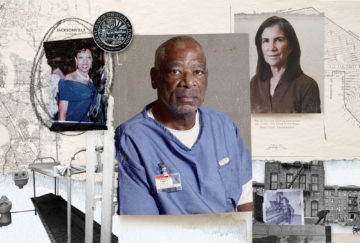 The United States has inherited competing impulses: It’s “an eye for an eye,” but also “blessed are the merciful.” Some Americans believe that our criminal justice system — rife with
The United States has inherited competing impulses: It’s “an eye for an eye,” but also “blessed are the merciful.” Some Americans believe that our criminal justice system — rife with  In 2018, Sundar Pichai, the chief executive of Google — and not one of the tech executives known for overstatement — said, “A.I. is probably the most important thing humanity has ever worked on. I think of it as something more profound than electricity or fire.”
In 2018, Sundar Pichai, the chief executive of Google — and not one of the tech executives known for overstatement — said, “A.I. is probably the most important thing humanity has ever worked on. I think of it as something more profound than electricity or fire.”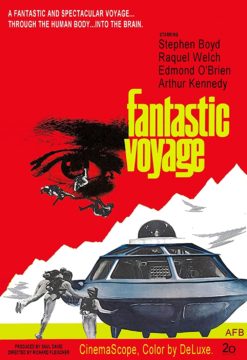 In Richard Fleischer’s 1966 film Fantastic Voyage, an elite crew of medical technicians—including the buxom but brainy Cora Peterson (Raquel Welch)—is shrunken down to microscopic size and climbs aboard the Proteus, a nano-sized submarine. The crew’s mission: to use a modified laser to destroy a blood clot on the brain of a dying scientist who holds important Cold War military secrets. Navigating their way through the dark, dangerous world of multicellular marauders and bacterial invaders, the crew of the Proteus spends a good amount of time on-screen peering out the windows in awe of the human body’s oceanic interior. Just after completing their assignment, and with valuable seconds ticking away, the crew of the Proteus is attacked by white blood cells. The survivors exit the body by riding out through a tear duct, cushioned in the saline safety of a single teardrop.
In Richard Fleischer’s 1966 film Fantastic Voyage, an elite crew of medical technicians—including the buxom but brainy Cora Peterson (Raquel Welch)—is shrunken down to microscopic size and climbs aboard the Proteus, a nano-sized submarine. The crew’s mission: to use a modified laser to destroy a blood clot on the brain of a dying scientist who holds important Cold War military secrets. Navigating their way through the dark, dangerous world of multicellular marauders and bacterial invaders, the crew of the Proteus spends a good amount of time on-screen peering out the windows in awe of the human body’s oceanic interior. Just after completing their assignment, and with valuable seconds ticking away, the crew of the Proteus is attacked by white blood cells. The survivors exit the body by riding out through a tear duct, cushioned in the saline safety of a single teardrop. Margaret Atwood, without a doubt one of the greatest living writers, is best known for her incredibly successful and award-winning novels The Handmaid’s Tale and, more recently, The Testaments. However, she is also an extraordinary short story writer — and Old Babes in the Wood, her first collection in almost a decade, is a dazzling mixture of stories that explore what it means to be human while also showcasing Atwood’s gifted imagination and great sense of humor.
Margaret Atwood, without a doubt one of the greatest living writers, is best known for her incredibly successful and award-winning novels The Handmaid’s Tale and, more recently, The Testaments. However, she is also an extraordinary short story writer — and Old Babes in the Wood, her first collection in almost a decade, is a dazzling mixture of stories that explore what it means to be human while also showcasing Atwood’s gifted imagination and great sense of humor.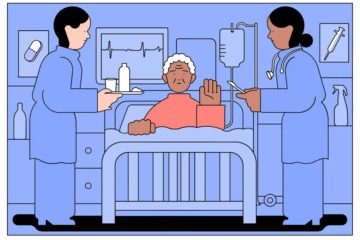 In July, Jennifer O’Brien got the phone call that adult children dread. Her 84-year-old father, who insisted on living alone in rural New Mexico, had broken his hip. The neighbor who found him on the floor after a fall had called an ambulance.
In July, Jennifer O’Brien got the phone call that adult children dread. Her 84-year-old father, who insisted on living alone in rural New Mexico, had broken his hip. The neighbor who found him on the floor after a fall had called an ambulance. There is something
There is something Researchers are discovering that “springing ahead” each March is connected with serious negative health effects, including an uptick in
Researchers are discovering that “springing ahead” each March is connected with serious negative health effects, including an uptick in  A “coup from above” occurs when a government that came to power in a perfectly legal way, violates the restrictions the law imposes on it, and tries to gain unlimited power. It’s a very old trick: First use the law to gain power, then use power to distort the law.
A “coup from above” occurs when a government that came to power in a perfectly legal way, violates the restrictions the law imposes on it, and tries to gain unlimited power. It’s a very old trick: First use the law to gain power, then use power to distort the law. Sure, we’re a website about books, but that doesn’t mean we can’t get in on the Oscars fun, too. (Exhibit A: If they gave Oscars to books,
Sure, we’re a website about books, but that doesn’t mean we can’t get in on the Oscars fun, too. (Exhibit A: If they gave Oscars to books,  W
W Intelligent decision-making doesn’t require a brain. You were capable of it before you even had one. Beginning life as a single fertilised egg, you divided and became a mass of genetically identical cells. They chattered among themselves to fashion a complex anatomical structure – your body. Even more remarkably, if you had split in two as an embryo, each half would have been able to replace what was missing, leaving you as one of two identical (monozygotic) twins. Likewise, if two mouse embryos are mushed together like a snowball, a single, normal mouse results. Just how do these embryos know what to do? We have no technology yet that has this degree of plasticity – recognising a deviation from the normal course of events and responding to achieve the same outcome overall.
Intelligent decision-making doesn’t require a brain. You were capable of it before you even had one. Beginning life as a single fertilised egg, you divided and became a mass of genetically identical cells. They chattered among themselves to fashion a complex anatomical structure – your body. Even more remarkably, if you had split in two as an embryo, each half would have been able to replace what was missing, leaving you as one of two identical (monozygotic) twins. Likewise, if two mouse embryos are mushed together like a snowball, a single, normal mouse results. Just how do these embryos know what to do? We have no technology yet that has this degree of plasticity – recognising a deviation from the normal course of events and responding to achieve the same outcome overall. Anton Jäger in The Point:
Anton Jäger in The Point: Seymour Hersh in Jacobin:
Seymour Hersh in Jacobin: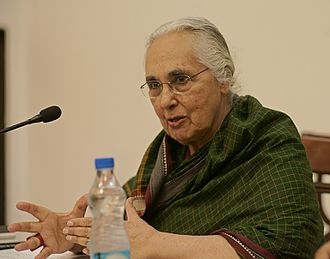 Aditya Bahl in Sidecar:
Aditya Bahl in Sidecar: